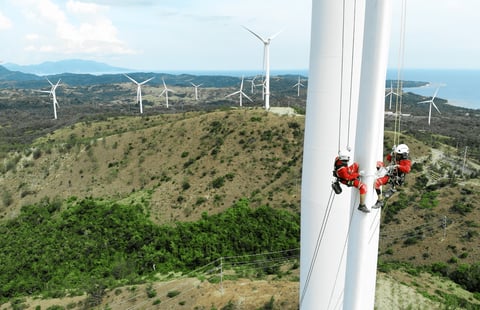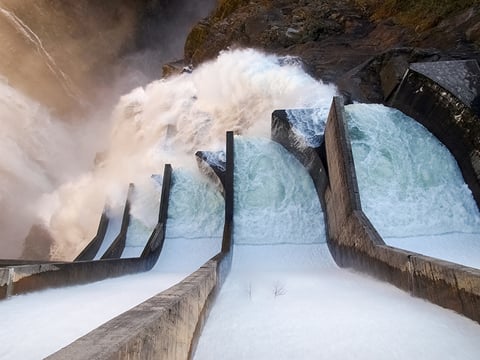Making the right choices in decarbonizing your energy supply

Energy transition management, or more specifically decarbonizing the energy supply, is a key issue for companies today.
If you’re thinking ahead like other major companies, but aren’t sure how to go about it, we can help. Corporate energy transition isn’t a one-step solution but that doesn’t mean it needs to be a long, complicated process. We can support you with whichever service you need.
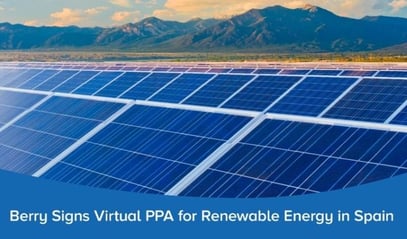 In the news:
In the news:
Berry Global signs their first virtual PPA in Spain – reducing their carbon footprint by a whopping 20,000 tons per year! And we were there to support them every step of the way. This 10 year contract means they now have access to 50 MW of solar power from Axpo Iberia SL.
Logical, thorough process

Decarbonizing your energy supply should strike the right balance between a company’s financial considerations and its impact on people and the planet.
Energy procurement often only addresses sustainability considerations at the very end, when contracts need to be signed. However, involvement from the very start can lead to better choices and optimal result for the financial and the environmental bottom line.
Step 1: Decarbonization strategy
 Decarbonization efforts will generate better results if they are based on a sound, comprehensive strategy. These strategies set clear targets and provide a coherent framework for utilizing the appropriate resources to achieve these goals. Regardless of how far down the line you are with a defined decarbonization strategy, a strategy assessment is a good starting point for greening your energy supply in a more effective manner.
Decarbonization efforts will generate better results if they are based on a sound, comprehensive strategy. These strategies set clear targets and provide a coherent framework for utilizing the appropriate resources to achieve these goals. Regardless of how far down the line you are with a defined decarbonization strategy, a strategy assessment is a good starting point for greening your energy supply in a more effective manner.
There are two vital aspects in constructing a good strategy:
- You ensure that all your stakeholders are onboard and communicating
-
You can begin to understand and decide on the most appropriate routes to take to green your energy – based on your business needs
Identify the most appropriate sustainable energy technologies
On-site solar panels, windmills, biomass projects, cogeneration... The possibilities grow with every year. We will help you to identify which of them make the most sense for:
- Reaching your sustainability goals.
- Achieving good rates-of-return on your sustainability projects.
- Improving your security-of-supply, e.g. in a remote area.
When assessing the potential of your different sites, we take into account the economics, the technical aspects, and the regulatory aspects.
Monitor your progress
An important element of any decarbonization plan is knowing exactly what your current situation looks like. Monitoring your carbon emissions allows you to see where you are and where you want to get to. It also allows you to see your progress.
E&C can help you with monitoring scope 1 and scope 2 emissions (GHG Protocol). Scope 1 refers to the emissions resulting from on-site energy transformation processes or the use of combustibles on-site, while scope 2 refers to the procurement of energy that was produced off-site, as is the case for electricity consumed from the grid.
This carbon reporting is integrated into our ePoint platform – your single source of information regarding all aspects of your energy spend.
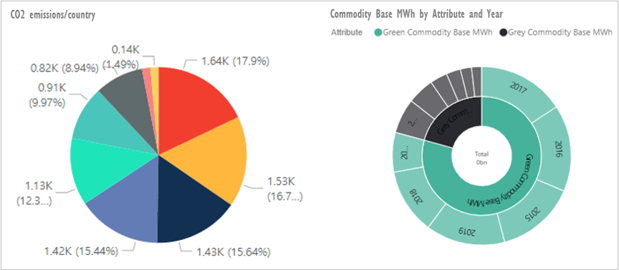
What are the benefits?
- A carbon report, based on your consumption per country per site, will give you an accurate picture of your carbon emissions at that moment.
- This allows you to focus on the areas that need to change first and to look into the opportunities in the market at that time
-
Sustainability is a rapidly changing landscape and the decarbonization options available are constantly updated – having a reporting mechanism which is kept up-to-date allows you to monitor the best opportunities depending on your needs as you progress in greening your energy.
Step 2: Green commodities
 The trade of green commodities has become the norm for many companies. If you are involved in an emission trading mechanism (i.e. EU ETS), you have a portfolio of carbon emission rights that you can trade. If you produce green energy, you might have tradeable certificates. Setting up and implementing a good strategy for green commodities trading can significantly improve the return on your investments.
The trade of green commodities has become the norm for many companies. If you are involved in an emission trading mechanism (i.e. EU ETS), you have a portfolio of carbon emission rights that you can trade. If you produce green energy, you might have tradeable certificates. Setting up and implementing a good strategy for green commodities trading can significantly improve the return on your investments.
In many countries, there is a market for green electricity, e.g. by the procurement of certificates of origin. However, the real contribution of the purchase of such certificates to carbon emission reductions can be questioned. As a result, you could risk exposing your company to accusations of greenwashing. In order to avoid this, take a look at the different types of green energy supply products now available on the market.
Based on the stakeholder analysis of the sustainability strategy, E&C will help you make the right choices when it comes to greening your energy supply, which in turn can significantly improve the return on your investments.
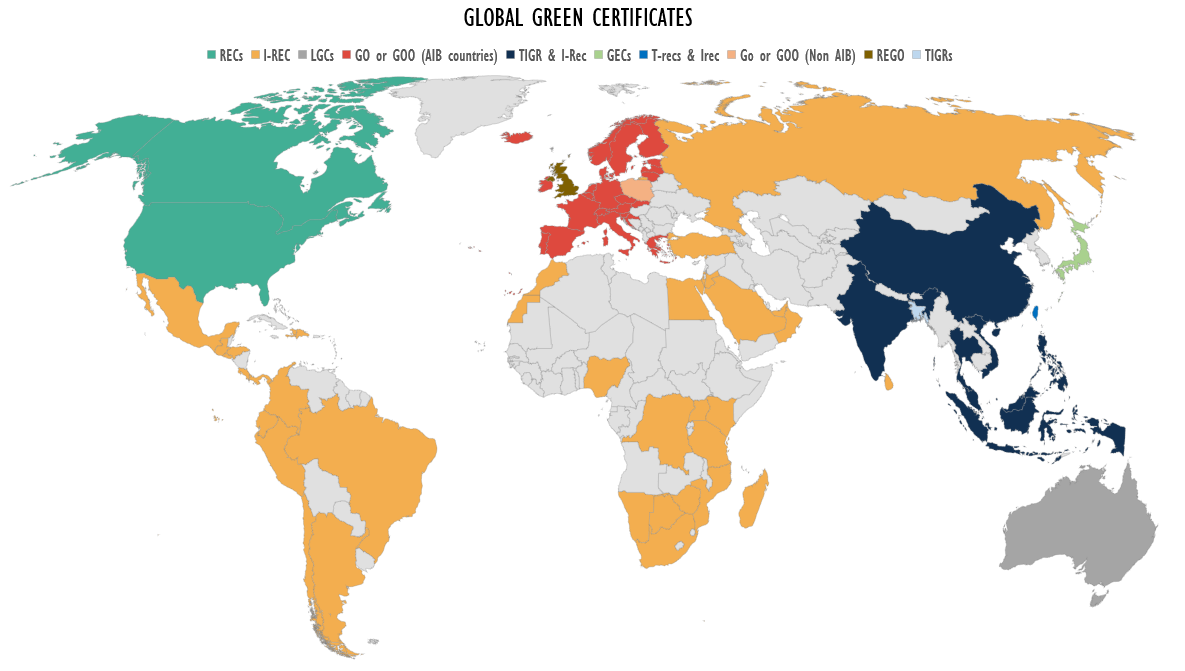
Step 3: Negotiate PPA contracts
 The negotiation of Power Purchase Agreements (PPAs) for self-generation (on-site) is often neglected. Contracts are signed without much negotiation or market research. This is unfortunate as running an RFP and conducting negotiations leads to important improvements in contract terms, which generates a lot of money as these types of contracts are often long-term in nature.
The negotiation of Power Purchase Agreements (PPAs) for self-generation (on-site) is often neglected. Contracts are signed without much negotiation or market research. This is unfortunate as running an RFP and conducting negotiations leads to important improvements in contract terms, which generates a lot of money as these types of contracts are often long-term in nature.
Good insight into costs and revenues will result in better forecasts, as the increase or decrease of returns produced by the fluctuations of the market is taken into account. E&C will help you formulate a business case for self-generation that is more in tune with market realities.
Self-generation can also make you a seller energy to the grid or to your neighbours. In such cases, strategies like those used for energy procurement should be deployed to optimize the results of your price fixing/unfixing decisions. A cogeneration unit can result in spark-spread trading, where part of the gas that you buy is used to produce power that is then fed into the grid. This requires an advanced trading strategy.
Step 4: Carbon off-set
Carbon off-setting is simply a way to compensate for the emissions you still make. The projects you fund allows an equivalent CO2 to be saved elsewhere (i.e. in planting trees). In one way, this is positive as it encourages investment in green projects, but it does not limit the amount of CO2 you produce. By this point in your greening process, the amount of CO2 being emitted should be minimal.
E&C, where procurement and sustainable energy management meet
E&C is not an engineering consultancy that can assist with the technical aspects of consumption savings or self-generation. However, as an energy procurement consultant, we can bridge the gap that often exists between the technical and the commercial considerations specific to procurement.
We will help you integrate your sustainability efforts into your energy procurement activities and adopt a more procurement-centred approach to sustainability. This will put more emphasis on financial considerations and will lead to a better return per dollar or euro invested, both in financial and sustainability terms.
This type of Integration is more than just a better way of looking at sustainability. It also affects the way your data is managed. By ensuring that all of the information related to your sustainability efforts makes it to the decision-makers, you can better integrate sustainability reports into energy cost reports (blog) generated by the procurement team.
Our focused approach also safeguards our independence. Our consultants aren’t thinking about how they can sell the products or services of another department when giving you sustainability advice. With E&C at your side, you can be sure that every project is carefully scrutinized for its financial and environmental impact, without any conflicts of interest. This also means full transparency as we share all of our calculations with you.


